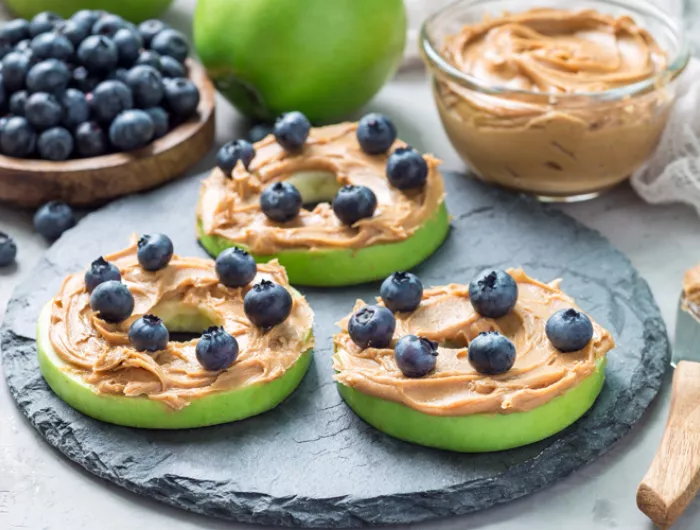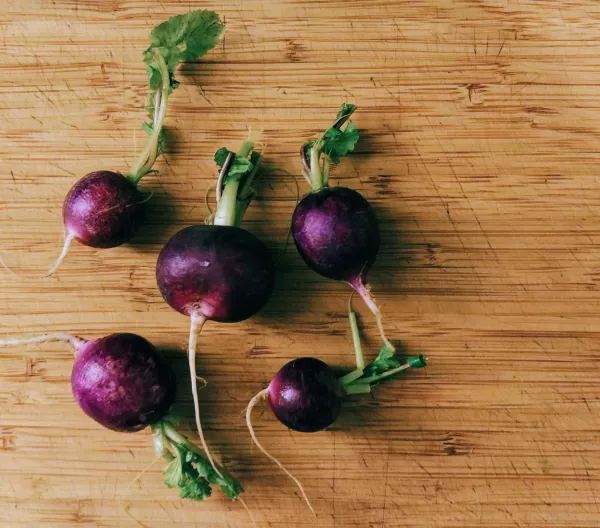The best nut butters & beyond

iuliia_n - stock.adobe.com.
Nowadays, nut butters range from nothin’ but nuts to hazelnut-laced sugar-and-oil spreads. Then there are the no-nut spreads, which coax “butter” out of everything from sunflower seeds to, um, crushed cookies. Here’s our guide to what matters. For our take on the latest spreadables, see below.
1. Get mostly healthy fats.
It’s a no-brainer. We’re talking nuts and seeds, so plenty of butters fit the bill.
Our Best Bites and Honorable Mentions have no more than 3 grams of saturated (unhealthy) fat per two-tablespoon serving. That means most butters that contain just nuts or seeds (plus salt, maybe) qualify.
That limit also lets in some “no stir” butters. They add only a touch of sat fat from palm, coconut, or other oils that stay solid at room temperatures, which keeps the spreads from separating.
To maximize your dose of heart-healthy polyunsaturated fats, bypass cashew butter in favor of peanut, almond, or just about any other. (See “Nut vs. Nut.”)
2. Minimize added sugar.
Nuts are delicious on their own, so our Best Bite butters have no added sugar. Honorable Mentions can have up to 3 grams (less than 1 teaspoon).
Most unflavored nut butters have no more than that. But don’t be duped by flavored spreads. Nutella, Trader Joe’s Cocoa Almond Spread, and 365 Organic Hazelnut Cocoa Spread contain more added sugar (17 to 19 grams) than nuts.
Two better bets for chocolate lovers: yummy Peanut Butter & Co Dark Chocolatey Dreams or Soom Dark Chocolate Tahini with Sea Salt. Each adds just 6 grams (about 1½ tsp.) of sugar.
3. Don’t sweat the sodium.
Our Best Bites add no salt. But let’s say you want some. Just a dash of sodium is enough to get great taste. Take Smucker’s Natural Chunky Peanut Butter. Two tablespoons have only 95 milligrams (4 percent of a day’s worth) of sodium. In fact, few butters top 150 mg, our limit for Honorable Mentions.
4. Consider protein.
Want a little plant protein from your schmear?
Cashew or oat butter isn’t the best (see "What to know about new oat butter"). Each typically has just 2 to 4 grams of protein in two tablespoons, instead of the 6 to 8 grams in peanut, almond, soy, or sunflower butter.
And spreads that replace some of their nuts with sugar and oil (like Nutella) or all of the nuts with cookies (like Lotus Biscoff Cookie Butter) have a measly 1 or 2 grams of protein.
5. Peanut butter or almond?

Almonds have slightly more fiber, magnesium, calcium, and vitamin E, but peanuts are no slouch in the nutrient department. And a jar of almond butter costs about twice as much as peanut. Both get Best Bites, so let your taste buds—or wallet—guide you.
What’s no different: calories. Almond, peanut, and other nut butters are similar (around 180 to 200 calories per serving). Heard that almonds have roughly 20 to 25 percent fewer calories than scientists thought? That’s not true for puréed almonds. (It applies to whole almonds because many people don’t chew them well.)
6. Don’t fear “hydrogenated” oil.
Skippy Creamy Peanut Butter contains “hydrogenated vegetable oil.” That’s not the same as “partially hydrogenated oil”—the infamous artificial trans fat that the FDA banned years ago.
“Hydrogenated” means “fully hydrogenated.” That’s a saturated oil...much like the palm or coconut oil in “natural” no-stir nut butters (see No. 1). And nut butters don’t have very much.
Is a nut butter with added protein worth buying?

New “protein” butters don’t turn peanut or almond butter into chicken breast. We’re talking 9 or 10 grams of protein in every two tablespoons instead of the usual 6 to 8 grams.
Does that matter? It might if your meal (say, a peanut-butter-and-banana sandwich) has little protein elsewhere. But maybe not if you’re only having a snack (like an apple with peanut butter). Here’s what you’re getting...and paying:
- Skippy Protein. It’s peanut butter blended with enough pea protein to hit 10 grams per serving. We paid $4.50 for a 14 oz. jar—about $1.50 more than regular Skippy.
- PBFit Added Protein Spreads. Again, pea protein brings the peanut spread’s total to 10 grams per serving. (The label’s “42% more protein” sounds more impressive than “3 grams more protein.”) But it costs up to twice as much as Skippy Protein. And a 16 oz. jar of PBFit’s almond spread (9 grams of protein) hits $14.
- RX. All of the company’s almond and peanut spreads add dried egg whites instead of pea protein and dates instead of some (or all) of the sugar. They’re no cheaper than PBFit.
Two of the best no-nut butters

Allergic to peanuts or almonds but want a butter that delivers healthy fats and just as much protein? You have options:
- Sunflower butter. SunButter is not only free of peanuts and tree nuts; it’s processed in facilities without them. Bonus: sunflower butter has more folate, magnesium, zinc, and vitamin E than peanut butter.
- Soy butter. Wowbutter turns toasted soybeans, oil, sugar, and salt into near-nut-butter. Mmm. Too bad it’s not as easy to find in stores as SunButter (check online).
The pros and cons of powdered nut butters

Powdered nut butters like PB2 and PBFit are made of nuts that have been pressed to remove much of their oil. To prepare, mix with a little water. Each serving has a decent dose of plant protein (4 to 9 grams) for a fraction of the calories (50 to 70)...but less of that creamy texture.
That said, a spoonful easily blends protein and a nutty flavor into smoothies. And powders sure beat “reduced fat” spreads like Skippy Reduced Fat or Better’n Peanut Butter, which replace some healthy nut fat with refined carbs like corn syrup solids, rice syrup, or tapioca syrup. (We didn’t list those in our chart.)
What to know about new oat butter
Oat Haus Granola Butter replaces nuts with finely ground oats.

The downsides:
- Fats. Olive oil (good) plus coconut oil (bad) pushes the sat fat above nut-butter territory.
- Protein. Oats instead of nuts means just 2 or 3 grams in a two-tablespoon serving.
- Added sugar. Most varieties have enough maple syrup to add 4 or 5 grams of sugar per serving.
- Price. It’ll cost you some $10 to $13 for a 12 oz. jar.
The upsides:
- Got allergies? It’s peanut-free.
- Taste. The Original tastes like an oatmeal cookie (cinnamon, cardamom, allspice, ginger).
Nut vs. Nut
All nuts and seeds have roughly the same amount of fat (15 to 20 grams per ounce), but the percentage that’s saturated, polyunsaturated, and monounsaturated varies. Most nuts, seeds, and their butters lower LDL (“bad”) cholesterol if you eat them instead of meat, cheese, or refined carbs. But nuts and seeds with far more (LDL-lowering) poly fat than (LDL-raising) sat fat can do the most good. (Nuts with mostly mono fat are second best.) Cashews, Brazil nuts, and macadamias have the least poly vs. sat, so their butters don’t get a Best Bite or Honorable Mention.

Support CSPI today
As a nonprofit organization that takes no donations from industry or government, CSPI relies on the support of donors to continue our work in securing a safe, nutritious, and transparent food system. Every donation—no matter how small—helps CSPI continue improving food access, removing harmful additives, strengthening food safety, conducting and reviewing research, and reforming food labeling.
Please support CSPI today, and consider contributing monthly. Thank you.
Tags
Topics
Our chart of the best spreadable butters
Best Bites (✔✔) and Honorable Mentions (✔) have no more than 3 grams of saturated fat in a 2 Tbs. serving. Best Bites have no added sugar or salt; Honorable Mentions can have up to 3 grams of added sugar and 150 mg of sodium. We disqualified cashew, macadamia, and Brazil nut butters (see “Nut vs. Nut”), but not butters that mix those with other nuts.

Let's stay in touch
Get our (free) healthy tips
Our free Healthy Tips newsletter offers a peek at what Nutrition Action subscribers get—scrupulously researched advice about food of all kinds, staying healthy with diet and exercise, and more.

